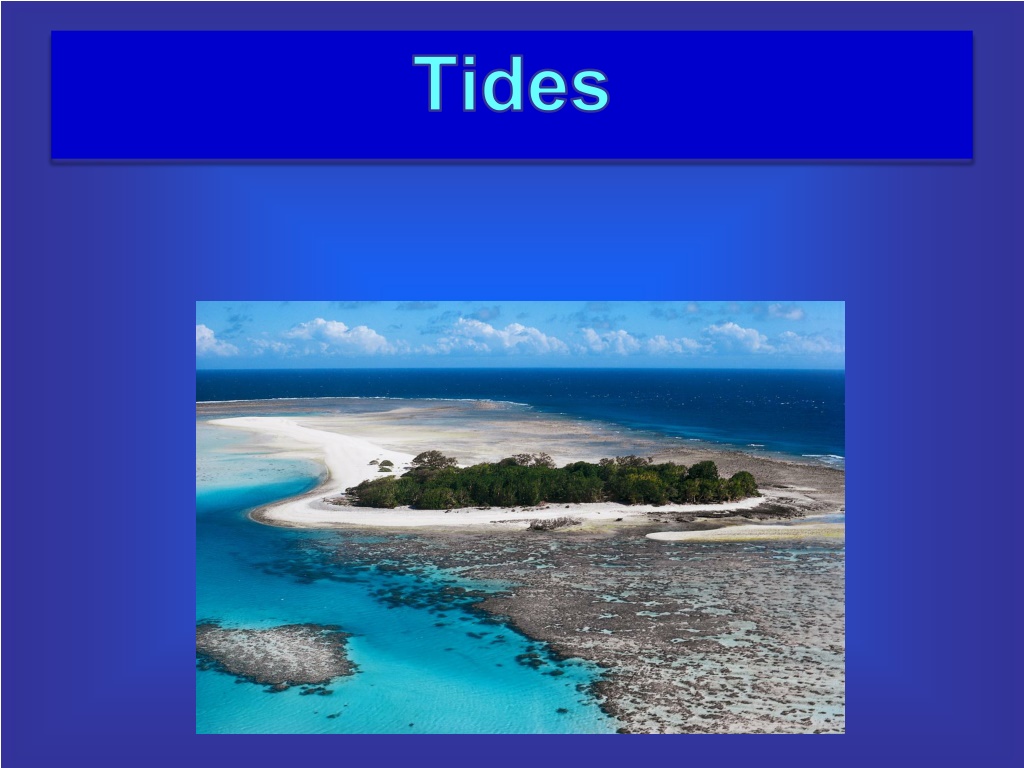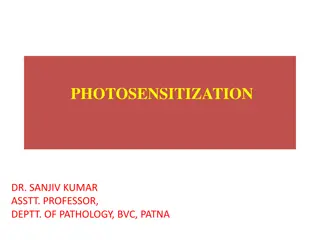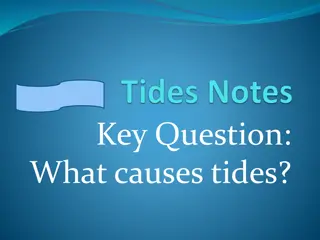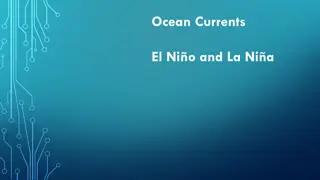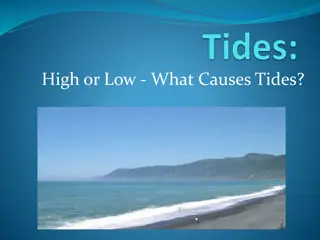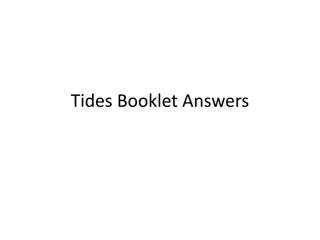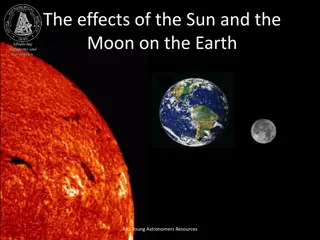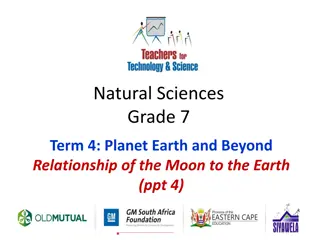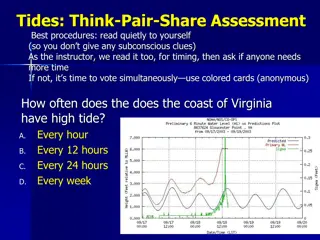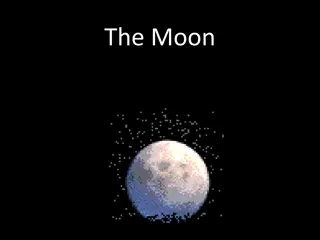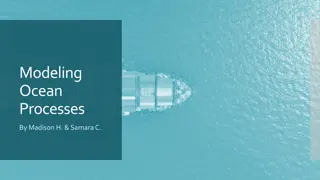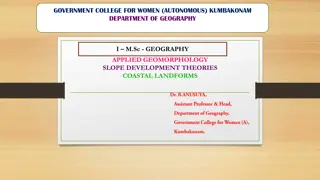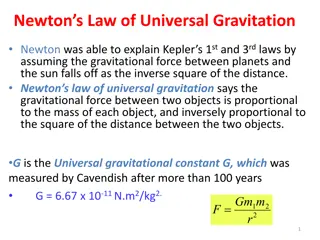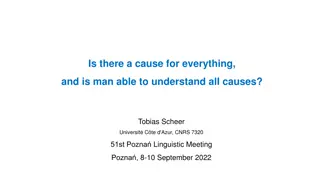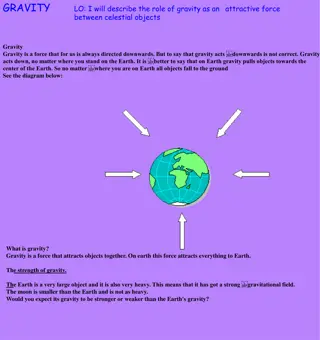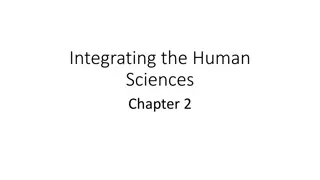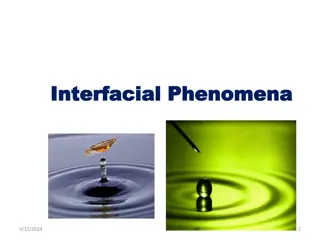Understanding Tides: Causes, Types, and Phenomena
Explore the fascinating world of tides, from what causes them to the daily cycle of high and low tides. Discover why the moon plays a significant role in influencing tides and how tidal currents contribute to the dynamic movement of ocean waters. Learn about the gravitational forces of the Earth, Moon, and Sun that create the rhythmic rise and fall of the ocean's waters along coastlines.
Download Presentation

Please find below an Image/Link to download the presentation.
The content on the website is provided AS IS for your information and personal use only. It may not be sold, licensed, or shared on other websites without obtaining consent from the author. Download presentation by click this link. If you encounter any issues during the download, it is possible that the publisher has removed the file from their server.
E N D
Presentation Transcript
Lesson Objectives I can explain what causes/creates tides. I can explain the reason why we have spring and neap tides. I can explain why the moon affects our tides more than the sun.
Tides Tides are the daily rise and fall of Earth s waters on it s coastline. Tides occur in all bodies of water, but they are most noticeable in the ocean and large lakes. Tidal Range is the difference between high and low tide.
What are tides? Tides- are very long-period waves that move through the oceans in response to the gravitational forces exerted by the moon and sun. Originate in the oceans and progress toward the coastlines. High Tide- rise (crest) Low Tide fall (trough) High Tide Low Tide = Tidal Range.
High Tides High tides are when the water reaches it s highest point.
Low Tides Low tides are when the water reaches it s Lowest point.
Tidal currents Tidal Current consists of: Flood current Tide coming in Ebb current Tide going out
Daily Tide Cycle Most seashores have 4 tides every day 2 High tides and 2 low tides A change from low to high tide or vice versa takes about 6 hours and 12 minutes. Tidal movements can be tracked.
How many high/low tides? 2 High Tides 2 Low Tides Every 24 hours and 50 minutes
What creates a tide? Tides are caused by the interactions of the Earth, Moon, and Sun. Gravity major force responsible for creating tides Inertia acts to counterbalance gravity 2 Bulges Created by Gravity and Inertia
Law of Gravity and Factors All objects attract or pull on each other with an invisible force without contact The pull of gravity (attraction) depends on these 2 factors: - Mass More mass the more attraction - Distance More distance less attraction
Math equation for Newtons Gravity Law All objects attract or pull on each other with an invisible force without contact
Gravitational forces between 2 objects creates tides
Moon bigger role on our tides than the sun - moon has 2x greater gravitational pull than the sun on our tides because a lot closer. - sun is 10 million x more massive than the moon but is 390 times farther away
Gravity and Inertia = Bulge NEAR SIDE Side of Earth facing the moon gravitational attraction is strongest (E and M) because closer Inertia tries to keep the water in place Water - Pulled toward Moon Result: Bulge due to gravity
Gravity and Inertia = Bulge FAR SIDE Opposite side of the Near Side of Earth where the gravitational attraction of the moon is less because it is farther away. Inertia counteracts the gravitational force Water- moves away from the Earth Result: Bulge - Inertia REST gravity and inertia = balanced
Tidal Bulge High Tide In places where there are tidal bulges, high tides are occurring. High Tide High Tide
Tidal Bulge Low Tide In places between the bulges, low tides are occurring. LOW TIDE LOW TIDE
Neap Tides Occur: Gravitational forces are perpendicular to each other (S and M to E) 1st Quarter Moon 3rd Quarter Moon Contribution: Moon: gravitational forces Sun: gravitational forces Type: Weak Moderate Tidal Range
Spring Tides Occur: Earth, the Sun, and the Moon are in a line Full Moon New Moon Contribution: Moon: gravitational forces Sun: gravitational forces Type: Strong Large Tidal range
Earth-Moon-Sun positions for Spring and Neap Tides Spring Tide Highest high tide and lowest low tide Neap Tide Moderate tidal range
Monthly Tide Cycle (29 days) Changes in the positions of Earth, the Moon, and Sun affect the height of tides during a month.
Monthly Tidal Cycle (29 days) About every 7 days, Earth alternates between: Spring tide Alignment of Earth-Moon-Sun system Large tidal range Neap tide Earth-Moon-Sun system at right angles Small tidal range
Tidal Ranges/Current Movement ow tide
Graph showing tides ow tide
Video Clips http://www.youtube.com/watch?v=l37ofe9 haMU Study Jams Video
Big Ideas The moon has more of a role on our tides than the sun since it is much closer. Spring Tides are when Earth, Moon, and Sun are aligned. - Occur during new and full moon - Greatest difference between high and low tide - Strong Tides
Big Ideas Neap Tides are when the Moon and Sun pull at right angles to each other. - Occur during 1st and 3rd quarter moon - Least difference between high and low tide - Weak Tides The pull of gravity (attraction) depends on these 2 factors: - Mass The more mass the more gravity - Distance The less distance the more gravity
